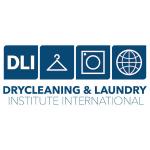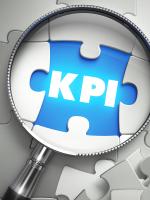CHICAGO — While leadership training was confined to those about to take charge of a department or a company in the past, today’s employees need to feel more empowered in their positions. Otherwise, they might start looking for other opportunities to fulfill themselves.
The Society for Human Resource Management (SHRM) recently held a webinar on the topic of methods companies can use to build up leadership skills in their employees. The discussion, “Two Paths: Developing Effective Managers and Potential Leaders,” was conducted by Sharlyn Lauby, president of ITM Group, a training and human resources consulting firm that focuses on helping companies retain and engage talent, and the author of the HR Bartender newsletter.
The Difference Between Managing and Leading
Lauby started by defining the term “management,” saying that the classic definition has five different functions:
- Planning — Setting goals to get the work done.
- Organizing — Laying it out so they know how many resources they need.
- Staffing — Making sure there are enough people and resources to do the work.
- Directing — Coaching, supporting and guiding the employees’ activities, Lauby says, “in terms of getting the work done, answering questions, guiding activity and possibly helping employees establish priorities.”
- Controlling — Monitoring the processes and the resources. “Not necessarily from a micromanagement point of view,” Lauby says, “but possibly having to shift the way work gets done, looking at quality control issues within the organization or, depending upon what’s happening around them, reallocating resources in order to get the work done.”
“Management is a little different than leadership,” Lauby says. “Leadership is the ability of an individual to influence — to have an effect on someone or something. And a key component of influence in the concept of power.” This means, she says, that one cannot have influence without some form of power over it.
“Sometimes I get a little pushback from people when I use this term,” Lauby says. “They’ll say, ‘Oh, I don’t have any power.’ I want to encourage all of us to think of this: That’s simply not true. We all have power. The question is, what kind and how much?”
The Seven Types of Power
Lauby then described what she sees as the seven types of power in the workplace:
Coercive — “Coercive power means the power to punish,” Lauby says. “When we think about the proverbial power trip, we think of coercive power. Your manager has the ability to write somebody up, or they have the ability to give me the shifts I don’t like.”
However, there’s also another kind of power that’s often associated with coercive power. “In an emergency situation where someone has to take control of a situation and they have to tell people what to do in an almost non-collaborative way,” she says. “In an ideal work situation, we all sit around, we collaborate, and we reach a consensus. In an emergency situation, I have to tell somebody, ‘This is what you’re going to do, and you have to do it right now.’”
Lauby uses the example of hurricane season in Florida, where she lives.
“In a hurricane situation, if you’re leading the hurricane committee, you might say, ‘We need to do this, and we need to do it right now.’ This means we have a tremendous amount of power over that situation. We need to just tell people what to do, and there’s not a lot of debate about it.”
So, while coercive power is often seen as ‘the bad kind,’ Lauby says, “there’s also moments where coercive power is exactly what the organization might need.”
Connection — By building connections, we start to have more control over situations by being able to pull together as a team. “This is the power of our connections,” Lauby says. “We encourage people to network, to build a personal group of advisers. We want people to make connections.”
Expert — “This is the power of knowing something really, really well,” Lauby says. “It could be that we have a certification or an advanced degree. But expert power could also be someone in the organization who just does things exceptionally well.”
As an example, when Lauby worked in the hospitality industry, one of the things that was encouraged was a concept called ‘upselling.’
“If you’ve ever been to a restaurant and ordered a drink,” she says, “somebody might say, ‘Would you like a particular kind of liquor in it?’ or, ‘Would you like an appetizer?’ That’s upselling. You’re encouraging the person to buy more. That doesn’t involve a degree or a license, but there are people who are exceptionally good at it — and those individuals might offer some suggestions to someone else in the organization who is still learning that particular part of the job.”
Informational — “Informational power takes on a couple of different aspects,” Lauby says. “informational power could be the power of just people knowing things. If you think about your organization, there are people who seem to know what’s going on. If you’re ever trying to find out what’s happening in the organization, you ask the person who just really seems to have the pulse of the place.”
The ability to find information is the other aspect of this type of power, she says.
“In today’s technology world, where so much information is available to us on the internet, informational power is the person who manages to curate really good information. That’s a skill that we have to work on, but finding good sources of trusted information can make you really valuable.”
Legitimate — “Legitimate power is the power that comes with your job title,” Lauby says. “As a director of human resources, I had the ability to ask the accounting department to cut a manual check, and that was attached to my job title. The director of operations wasn’t able to do that, and the director of payroll wasn’t able to do that. But I was able to do that. based on my job title. If my job title changed, I couldn’t do it any longer.”
Referent — “Referent power is the power of being friendly or nice,” Lauby says, “of being well-liked. We see this sometimes in organizations when very well-liked employees have an idea or have something that they’re trying to pitch, and they are able to rally others behind them and get other people to sign on board. There’s a power associated with being nice.”
Reward — “This is kind of the opposite end of the spectrum from coercive power,” Lauby says. “Reward power is the power of being able to provide rewards. Let’s say that a scheduling person is able to give you a shift that you really like. When I worked in the hospitality industry, every once in a while, the chef would just deliver cookies to the human resources department. So, I just consider that to be a kind of reward power — cookies would just miraculously show up, but we didn’t have to ask for them.”
Lauby believes that, while different employees have different levels of each of these types of power, they do have power.
“We all have these,” she says. “There are some that we’re trying to grow — we might be getting a certification to improve our expert power, or we might be consciously spending more time trying to build relationships within the organization as part of connection power. So, we don’t want to dismiss power in the context of leadership, because employees look at people within the organization and say, ‘They have the power to fix this. They have the power to do something about this.’ And we’d like to see that happen.”
Lauby believes that it’s important to understand these definitions of management and leadership. “If we can get the organization to agree on what management and leadership means,” she says, “then this becomes really valuable when we start to talk about development programs, both management development programs, and leadership development programs.”
Come back Thursday for Part 2 of this series, where we’ll explore how to build leadership into the employee experience.
Have a question or comment? E-mail our editor Dave Davis at [email protected].











































































































